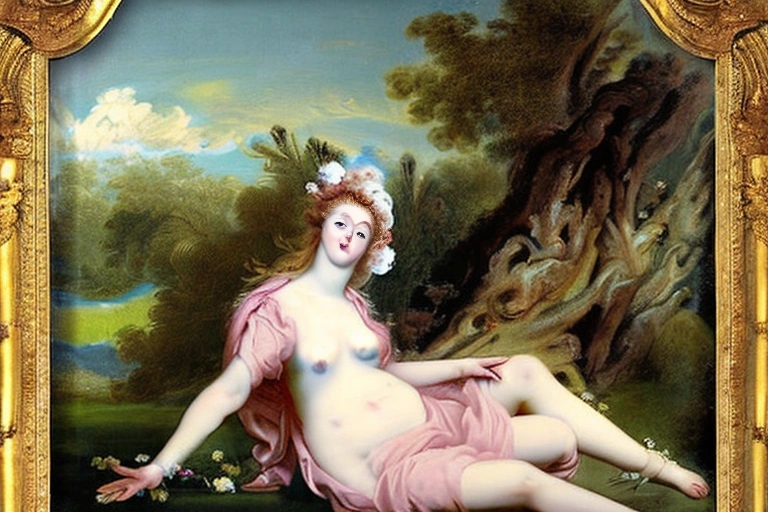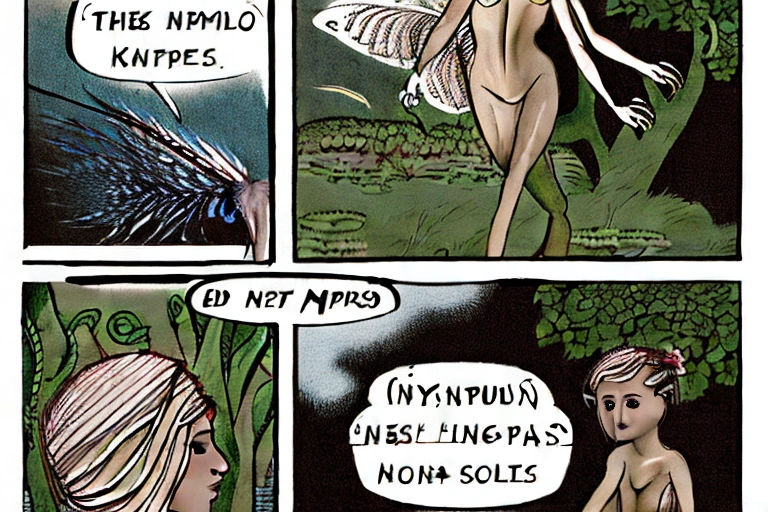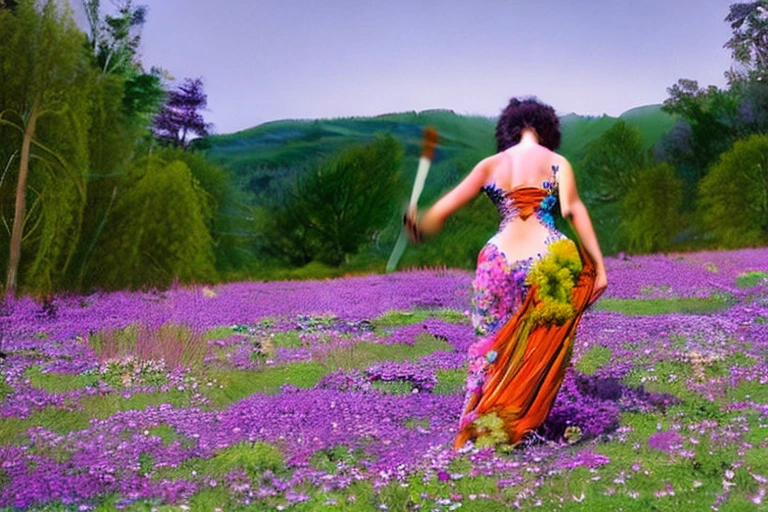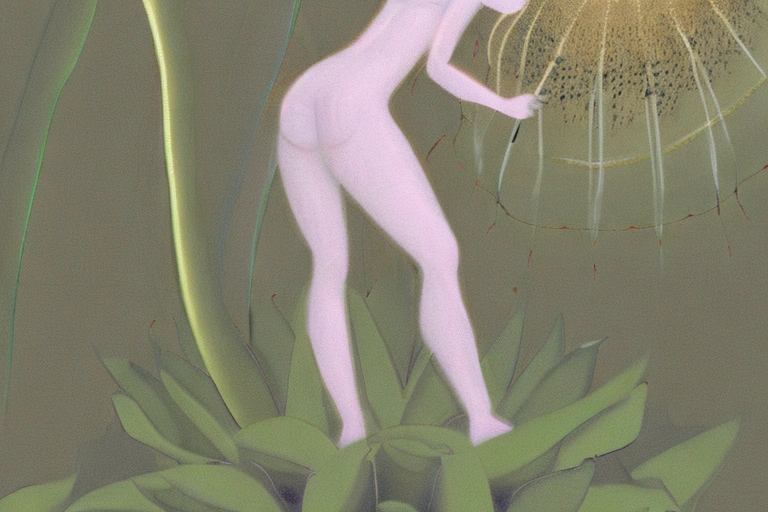The Modern Nymphs of Art
Have you ever wondered what it would be like to live in the world of art? To experience the beauty and creativity that flows through the veins of a true artist? The answer may surprise you – meet the modern nymphs of art. In this blog post, we’ll explore who they are and how they are changing the way we view art today.
Introduction to Nymphs in Art
In art, the nymph has often been used as a symbol of beauty and innocence, both in traditional paintings and more contemporary pieces. A nymph is typically defined as a young woman who lives near water or some other type of sacred space, such as mountains. They are usually depicted wearing flowing dresses or skirts and often holding flowers or trees in their hands. They are revered by many people around the world for their natural qualities of purity and enchantment.
Nymphs have long been an important part of Western art. One early example can be found in the paintings of Leonardo da Vinci, who often included them in his work. In particular, he frequently used them to depict female subject matter with an elegant and graceful look. Many famous painters throughout history have also made use of nymphs in their work, including Raphael, Michelangelo, Hieronymus Bosch, and Edvard Munch. Today, they continue to be one of the most popular subjects for artists to explore; there are countless examples available on display in museums all over the world.
![]()
Ancient Greek Nymphs in Art
The Ancient Greek nymphs in art are some of the most recognizable and popular images in Western culture. These illustrious creatures feature prominently in many works of art, from frescoes and sculptures to paintings and tapestries.
Nymphs were often depicted as beautiful girls with flowing hair and flowery garlands around their necks. They tended to be associated with nature and pastoral imagery, symbolizing innocence and purity. Some artists used them as a model for portrayals of angels or other heavenly figures.
Roman Nymphs in Art
The Roman Nymphs of Art were strikingly different from their ancient Greek counterparts. Whereas the Ancient Greeks tended to portray nymphs as demure beings with long, flowing hair, Roman Nymphs were often depicted in more robust and athletic forms. This was likely due to the fact that these nymphs frequently served as magical guardians or guides for important figures in society.
One of the most well-known examples of a Roman Nymph is Venus, who is often represented wearing a crown of flowers and holding a sceptre. She is also known for her role in bringing fertility and prosperity to people both individually and as a country. Interestingly, many modern artists have drawn inspiration from the Roman Nymphs of Art in creating their own works of art.
Renaissance Nymphs in Art
The Renaissance was a time of great change, both culturally and artistically. With new ideas and techniques emerging, many artists began to depict nymphs in their work. These ethereal spirits symbolized the beauty and innocence of life.
Some of the most famous Renaissance nymphs are Venus de Milo, Aphrodite, and Centaurea. Their statuesque figures continue to captivate viewers centuries after their creation. Other notable Renaissance nymphs include Marguerite Gautier and Isabella d’Este.
Baroque Nymphs in Art
The Baroque period in art was characterized by a more exuberant and ornate style, with more nymphs appearing in paintings and sculptures. These nymphs were often depicted as innocent and graceful creatures, often dancing or playing music. They were often used as a symbol of innocence and purity, and were often used to represent the ideal of femininity.

Rococo Nymphs in Art
The Inspiration of Nature
The Rococo period in art was inspired by the natural world, with nymphs and fairies being a popular motif. This was in contrast to the more severe Baroque style, which favored religious themes. Rococo nymphs were often depicted as playful and carefree, enjoying nature and reveling in their beauty. They were also often depicted with flowers in their hair, symbolizing their innocence and freshness.
The Allure of surrealism
In the 18th century, the nymphs of art were often depicted as whimsical and alluring creatures. This was in contrast to the more serious and realistic portrayals of the baroque era. Rococo nymphs were often depicted with delicate features and flowing hair. They were often seen dancing or floating in the air, giving off an air of enchantment.
One of the most famous Rococo nymphs is Marie Antoinette, who was known for her extravagant lifestyle and her love of luxury. Her nymph-like features and flowing hair made her a popular subject for artists during the 18th century. Other famous Rococo nymphs include Caroline de Beauvau-Craon, who was known for her depictions of nymphs in classical poses, and Anne-Jacques Rousseau, who was known for his portrayals of nymphs as innocent and ethereal.
Some of the most famous surrealist nymphs include Yoko Ono and Bertrand Russell. Their soft features and ethereal beauty make them an ideal subject for artists who aim to create a sense of unrealism. Though Rococo nymphs are now mostly forgotten, their allure is still evident in many contemporary paintings.
Exploring the Spiritual in Art
The Rococo era in art was characterized by its nymphs. These graceful creatures embodied the spiritual side of life and were often used as metaphors for the ideal woman. Their ethereal beauty, combined with their ability to wander mysteriously among the trees and flowers, made them perfect subjects for artists of this period. In this section we will explore some of the most famous Rococo nymphs in art and see how they reflect both the frivolous nature of this era as well as deeper spiritual themes.
New Perspectives on Mythology
In Rococo art, nymphs are often depicted as playful and carefree creatures, free from the constraints of society. They are often depicted dancing or frolicking in nature, or engaging in other whimsical activities. This playful and lighthearted aesthetic is a departure from the more austere Baroque style, and it reflects the changing attitudes of Rococo artists and their audiences.
New Perspectives on Mythology
The Rococo nymphs are often seen as embodiments of nature itself, embodying the natural beauty and power of the world around them. They are also seen as symbols of innocence and happiness, a contrast to the more austere Baroque nymphs who are often depicted as dark and dangerous creatures. This change in perspective is a result of the growing interest in mythology during the Rococo period. Rococo artists were inspired by the works of ancient Greek and Roman writers, and they were fascinated by the mythology of their own time. They saw the nymphs as symbols of nature and innocence, and they used them to explore the changing attitudes towards sexuality and morality during the period.

Romanticism and the Nymph
The nymphs of Romanticism were often depicted as ethereal and beautiful creatures, often associated with nature and the moon. They were often used as symbols of innocence and purity, and were often used as a motif in art to represent the transition from childhood to adulthood.

Modernist Representations of Nymphs
In the early 20th century, there was a resurgence of interest in the nymphs – magical creatures that enjoyed freedom and independence. This romanticism inspired many modernist artists to create paintings and sculptures of nymphs that are both visually appealing and philosophically complex.
One such artist is Henry Machine, who was influenced by Surrealism and Cubism. His works often feature distorted or animistic representations of nymphs, which he sees as symbols of free will and creativity. Other modernists who depicted nymphs include Pollock, Newman, Kline, Rivera, de Kooning and Willem de Kooning. Each used their own unique style to create contemplative compositions that celebrate the power and beauty of these magical creatures.

Postmodernism and the Reimagining of Nymphs
In the postmodern era, there has been a resurgence in the portrayal of nymphs in art. This can be seen in both traditional and contemporary art forms. Contemporary artists have often used nymphs as a symbol for freedom and liberation. They are often used as a metaphor for the free spirit of the artist.
Many traditional artists have also depicted nymphs in their work. They often use them as a symbol for beauty and innocence. They are often used to represent the eternal nature of life.

Gender and the Representation of Nymphs
Nymphs are often depicted as traditionally feminine beings, but this representation is not static. In the 20th and 21st centuries, there has been a shift in how nymphs are portrayed, with more modern depictions emphasizing their athleticism and power. This emerging trend can be seen in artists such as Agnes Martin, Damien Hirst, and Jeff Koons. These artists explore how nymphs can be thought of as both feminine and masculine figures; they are linked to the idea of excessiveness and display a lack of inhibition.

Cultural Interpretations of the Nymph Mythology
Recent scholarship on nymphs has shown that these mythical creatures have a very wide range of meanings and interpretations, both within classical mythology and in contemporary culture. In general, nymphs can be seen as representing the natural world or fertility, and they are often depicted in008 paintings, sculptures, and other artworks with a young, almost ethereal appearance. Some artists portraying nymphs focus primarily on their beauty and innocence, while others use them to comment on the ways in which women are portrayed in popular culture. As such, there is no one interpretation of the nymph myth that stands out as particularly accurate or influential; instead, each variation has its own unique story to tell.
The Legacy of the Nymph in Contemporary Art
The nymphs of art have been a source of inspiration for centuries, and their legacy can be seen in the work of contemporary artists. Contemporary nymphs often embody the free and uninhibited nature of youth, and their art often reflects this. They can be found in paintings, sculptures, and even fashion, and their beauty is often captured in ethereal and graceful forms.
In conclusion, the nymph has been a major part of art since antiquity. From Ancient Greece to Postmodernism, they have been represented in many ways and their mythology has allowed them to be interpreted through many lenses. Throughout the centuries, they continue to be paid homage in various artwork and are seen as timeless symbols of beauty and grace.
At [publication name], we explore this perpetual theme further with our other content – check out [links] for more!

Shoptimizer Blog
Meditation williamsburg kogi blog bushwick pitchfork polaroid austin dreamcatcher narwhal taxidermy tofu gentrify aesthetic.
Humblebrag ramps knausgaard celiac, trust fund mustache. Ennui man braid lyft synth direct trade.


